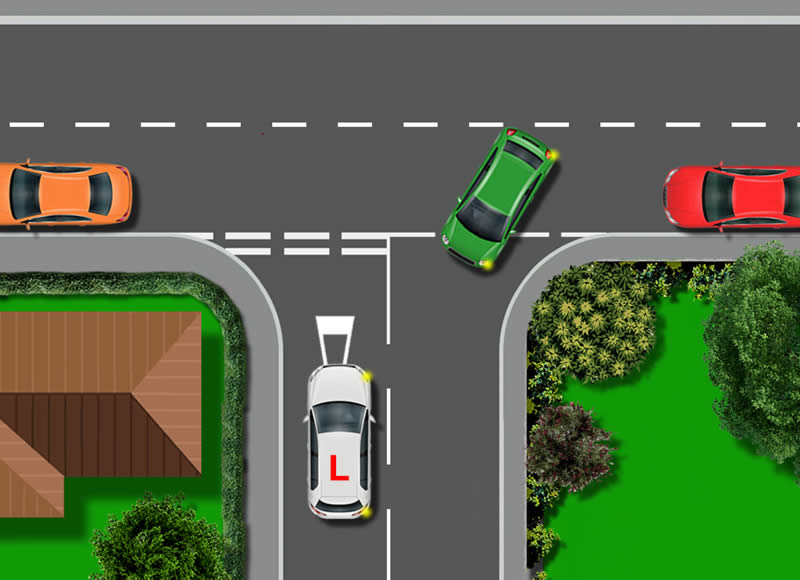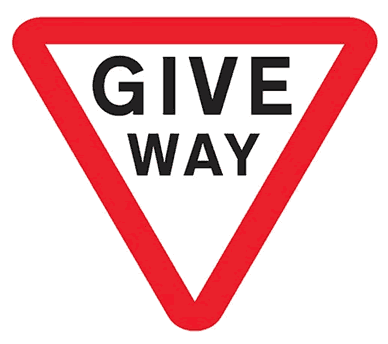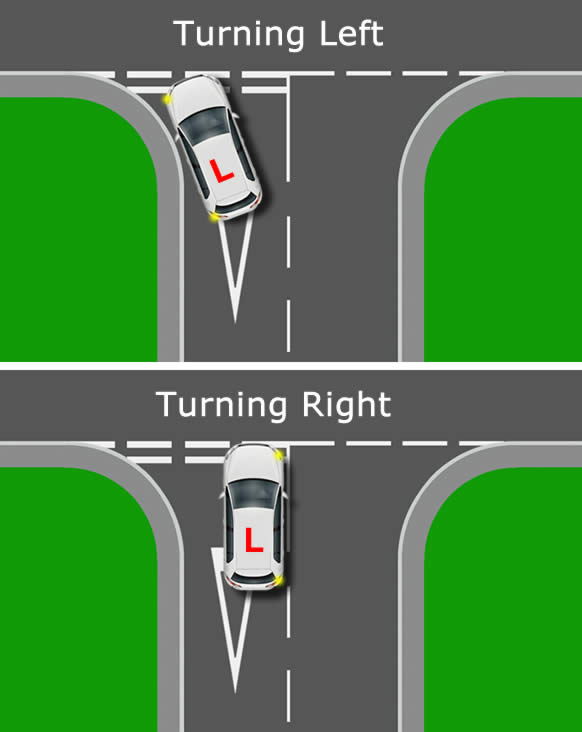We’ve already covered unmarked junctions, so now we’re going to take a look at ‘marked’ junctions. During the practical driving test, the examiner will take you through many junctions and marked junctions are the most common you’ll need to deal with
What are Marked Junctions?
Marked junctions have road markings to help drivers distinguish where the junction line is. The dashed lines at a marked junction inform the driver heading towards the T-junction that they may have to stop and give way to traffic on the road that you intend on joining. The white triangle road marking at the junction represents a give way sign.

Give Way signs
At a marked junction, you may also see a give way sign. Not all marked junctions have them, but the give way sign acts as an additional warning to the approaching driver that they need to prepare to give way.

Where Will You Normally See Marked Junctions?
You will come across marked junctions in all areas from country roads to busy towns and cities. Very quiet areas with little traffic flow are more likely to see unmarked junctions, whereas very busy areas with high traffic density will more likely have controlled junctions which have road markings and traffic lights.
How do you Approach a Marked T-junction?
Look out for traffic that’s crossing your path ahead or houses, trees or bushes that may give the illusion of a ‘dead end’. From a distance, this may indicate that you’re approaching a T-junction. Also look ahead for give way or stop signs. As with all junctions, use the the mirror, signal, position, speed and look routine as you approach.
If it’s a stop line, or if it’s a give way line and you need to stop, you’ll need to ensure that you stop so that the front of your car does not protrude over the junction line and into the road that you intend on joining.

Stop Signs and Stop Lines

At some marked junctions, rather than give way signs and give way road markings, you may see stop signs and stop road markings. Any junction that has stop signs and stop road markings, as a driver, it’s mandatory that you stop before proceeding into the new road (see stop junctions).
Hazards Associated with Marked Junctions
Always approach a junction at an appropriate speed based on what you can see. It may be a closed junction or a blind junction, so always be prepared to stop.
Whilst there will always be a stop sign at stop junctions, there may not always be a give way sign at a marked junction. Depending on how well maintained the road is, junction lines may also be faded and difficult to see. If the road markings are highly worn, you may need to position your car using the same technique as you would for a unmarked junction.
Learning to Drive at Junctions
Junctions can be challenging and complex and take a lot of practice. for further information about the different types of junctions, see learning to drive: junctions.